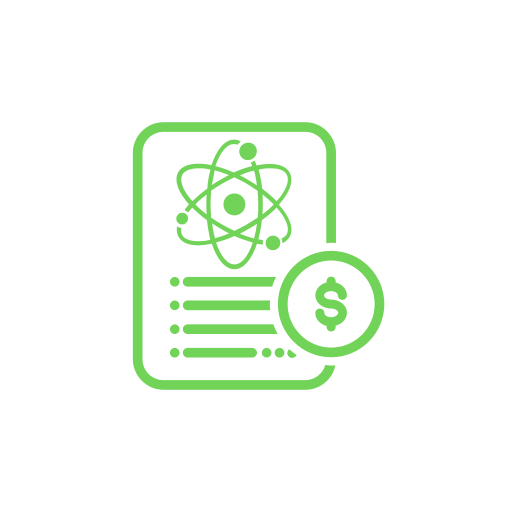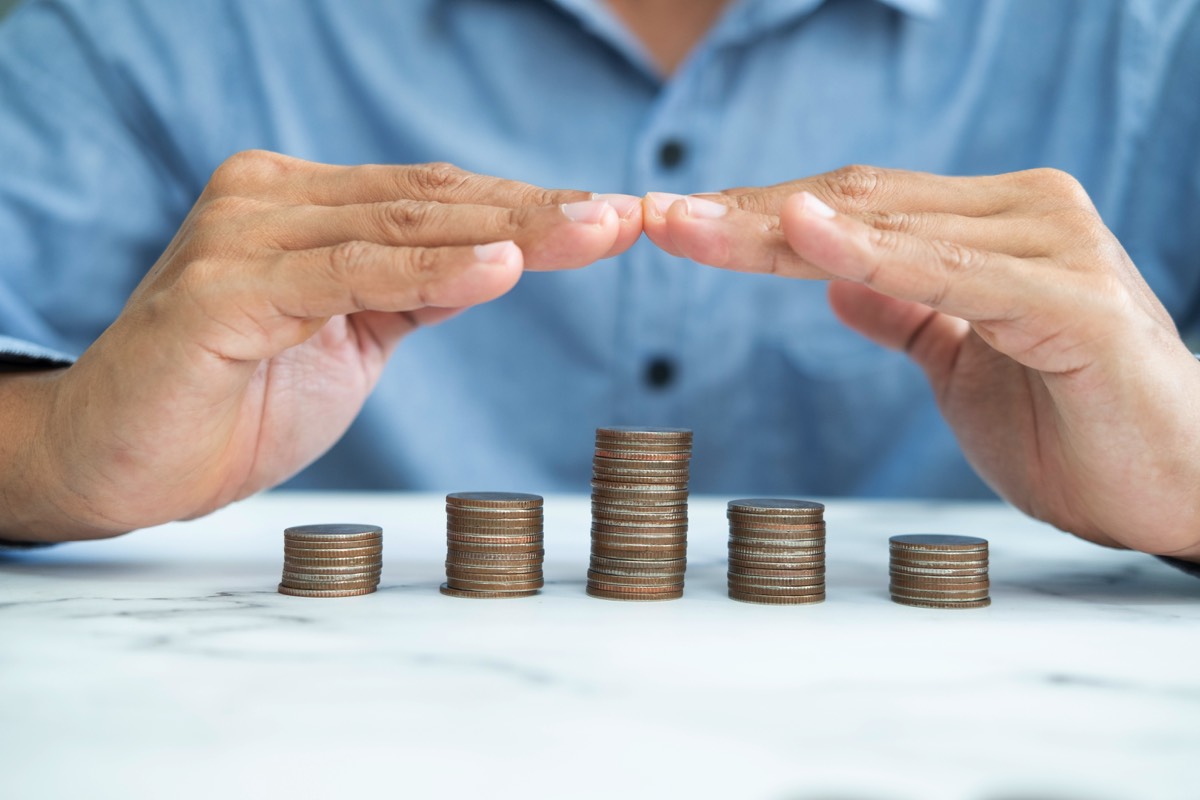-
 Landing the MegaDealConsider the following: you have an important client meeting in another (distant) city that you must attend, a sizable deal hangs in the balance, and there is only one flight available, and you must catch that flight. Fortunately, you have driven to the airport many times in the past and you know that ‘on average’ it takes 45 minutes to get there...McKinsey and CompanyJanuary 28th, 2017"
Landing the MegaDealConsider the following: you have an important client meeting in another (distant) city that you must attend, a sizable deal hangs in the balance, and there is only one flight available, and you must catch that flight. Fortunately, you have driven to the airport many times in the past and you know that ‘on average’ it takes 45 minutes to get there...McKinsey and CompanyJanuary 28th, 2017"
-
 The Science Behind the Coaching ToolkitConsider the following: you have an important client meeting in another (distant) city that you must attend, a sizable deal hangs in the balance, and there is only one flight available, and you must catch that flight. Fortunately, you have driven to the airport many times in the past and you know that ‘on average’ it takes 45 minutes to get there...Mel HardingJanuary 28th, 2017
The Science Behind the Coaching ToolkitConsider the following: you have an important client meeting in another (distant) city that you must attend, a sizable deal hangs in the balance, and there is only one flight available, and you must catch that flight. Fortunately, you have driven to the airport many times in the past and you know that ‘on average’ it takes 45 minutes to get there...Mel HardingJanuary 28th, 2017
So do you blindly leave 45 minutes early (or add an extra 10 minutes just in case) as you have done in
the past?
No, you do not!
This flight and client meeting are too important.
The first thing you do is look out the window to see if it is raining (or snowing) because you know this will slow things down and increase the commute time beyond 45 minutes. You also check the traffic conditions; is it rush hour, have there been any accidents, is there any road construction or other things that can block and slow down traffic?
All these changing conditions apply to this commute only and if any of them exist you quickly recognize that your chances of getting to the airport in 45 minutes will drop from say 95% to significantly less than 50%, and you can not take that risk. So you factor in additional time to be confident of getting to the airport on time.
Consider the thought process you are going through as you factor all these variables into your commute time? What you are doing is updating your belief in your chances of getting to the airport in 45 minutes with real time information about road and weather conditions. If the roads are empty and dry, your chances are extremely high (95%), but if they are not, your chances are extremely low (<50%). These updates only apply to this commute only, next week a different set of conditions could apply.
There is a name for this process of factoring-in changing conditions that will impact your belief in the chances of an event happening (95% confidence of getting to the airport in 45 minutes), and it is called Conditional Probability (Bayesian Inference).
Conditional Probability is one of the 2 primary tools used to determine the probability of a specific event happening, the other tool, which we are all familiar with, is Statistics.
The difference between the two is that statistics examines past events to predict the outcome of the current event. But it has two limitations; i) all events be identical, ii) it is a static methodology, meaning you can not update it in real time. In our commute example, what statistics is telling you is that if the current commute is identical to previous commutes, you have a 95% chance of getting to the airport in 45 minutes. But if it is not identical, then statistics offers no answer.
The second limitation means that you can not update the statistical average until after the event is over, which means that even if you are stuck in traffic for an hour and have missed your flight, statistics will still tell you that you have a 95% chance of completing the commute in 45 minutes.
Conditional Probability on the other hand, is used for single unique events, where there is no history.It examines how changing conditions will impact the outcome of an event. In our commute example, changing weather and road conditions will significantly reduce your chances of getting to the airport in 45 minutes to some number that is significantly less than 95%. Conditional Probability allows you to factor in these new conditions and determine the probability of getting to the airport in 45 minutes.
What that new percentage will be depends on the actual conditions, the severity of them, and their potential to impact your commute time.
But how does all this apply to sales, specifically pursuing an important deal and understanding your chances of winning it and of it closing on time?.
Why DealGuard Coaching Works!
Good Sales Intelligence = Good Sales Decisions
According to a recent article by McKinsey & Company (Landing the Mega-Deal) the number one (1) item you need if you hope to win large, important deals is ‘deal analytics/forensics’ that captures specific information about the deal, how things (‘Conditions’) are changing and how those changes will impact the desired outcome (your chances of winning it and of it closing by the forecasted close date.)
Your CRM Uses Statistics
Your CRM is not going to be of much use because it uses statistics to predict your chances of winning a deal. Typically it looks at where the deal is in the sales cycle and assigns a probability of success, ie.the sales rep has provided a quote, so you have a 70% chance of winning!.
But this winning probability is not based on any information about the actual deal, it is just the historic average of a whole bunch of identical deals. So if the current deal is identical to previous deal (ie. Run-rate business), you may be OK. But is that enough to win a mega deal? No, it is not.
If you treat your critical deals as ordinary, everyday deals, you should expect to get the same win rate, or less. If a mega-deal is important to you, it is also important to your competition and you can not assume that your competitors are not going to throw additional resources in the pursuit of it.
DealGuard Uses Conditional Probability
DealGuard is the type of sales analysis tool that McKinsey calls for in their report because it captures real time, verifiable information about the deal and analyzes the information using Conditional Probability
algorithms to understand and predict how changing conditions will impact your chances of winning the deal and of it closing on time.
DealGuard also keeps track of missing information to calculate the risk associated with that missing information. In addition, DalGuard provides concrete steps on what to do to keep the deal on-track and
move it forward to a successful close.
So if you have any large, critical, must-win deals you need DealGuard. Our Coaching Program provides you with a realistic and objective assessment of the deal and your chances of winning it and of it closing by the
forecasted close date. With over 16,500 critical deals analyzed and an accuracy of over 90%, you can be confident in the analysis, results and recommendations provided by DealGuard,
Our Brains work in Conditional Probabilities
If you think about it, we are continuously updating our belief in an event happening by factoring in changing conditions. We have all heard the expression ‘What could go wrong?”. The answer is typically
everything, as per Murphy’s Law. We tend to use statistical data as a baseline and then factor in conditions that could impact the outcome. An excellent & timely example in our everyday lives is the
COVID-19 pandemic. The epidemiologists who track and model these pandemics found that their statistical based models weren’t providing accurate predictions because COVID-19 was new and there
were ever changing conditions, so they switch to a Bayesian Inference model and got much more accurate results.
This was recently written up in the New York Times, click here to read the actual article.
For additional information or to see a demonstration of how DealGuard and Conditional Probability can help you win more big deals, please contact us at DealGuard@DeliberatSelling.com. -
 From the Nerd File: Conditional ProbabilityConditional Probability Definition Investopedia / Madelyn Goodnight What Is Conditional Probability? Conditional probability is defined as the likelihood of an event or outcome occurring, based on the occurrence of a previous event or outcome. Conditional probability is calculated by multiplying the probability of the preceding event by the updated probability of the succeeding, or conditional, event. Conditional probability can be contrasted with unconditional probability. Unconditional probability refers to the likelihood that an event will take place irrespective of whether any other events have taken place or any other conditions are present.ADAM BARONEUpdated August 25, 2022
From the Nerd File: Conditional ProbabilityConditional Probability Definition Investopedia / Madelyn Goodnight What Is Conditional Probability? Conditional probability is defined as the likelihood of an event or outcome occurring, based on the occurrence of a previous event or outcome. Conditional probability is calculated by multiplying the probability of the preceding event by the updated probability of the succeeding, or conditional, event. Conditional probability can be contrasted with unconditional probability. Unconditional probability refers to the likelihood that an event will take place irrespective of whether any other events have taken place or any other conditions are present.ADAM BARONEUpdated August 25, 2022KEY TAKEAWAYS
Conditional probability refers to the chances that some outcome occurs given that another event has also occurred.
It is often stated as the probability of B given A and is written as P(B|A), where the probability of B depends on that of A happening.
Conditional probability can be contrasted with unconditional probability.
Probabilities are classified as either conditional, marginal, or joint.
Bayes' theorem is a mathematical formula used in calculating conditional probability.
Understanding Conditional Probability
Conditional probabilities are contingent on a previous result or event occurring. A conditional probability would look at such events in relationship with one another. Conditional probability is thus the likelihood of an event or outcome occurring based on the occurrence of some other event or prior outcome.
Two events are said to be independent if one event occurring does not affect the probability that the other event will occur. However, if one event occurring or not does, in fact, affect the probability that the other event will occur, the two events are said to be dependent. If events are independent, then the probability of some event B is not contingent on what happens with event A. A conditional probability, therefore, relates to those events that are dependent on one another.
Conditional probability is often portrayed as the "probability of A given B," notated as P(A|B).
Conditional probability is used in a variety of fields, such as insurance, economics, politics, and many different fields of mathematics.
Conditional Probability Formula
P(B|A) = P(A and B) / P(A)
Or:
P(B|A) = P(A∩B) / P(A)
Where
P = Probability
A = Event A
B = Event B
Unconditional probability is also known as marginal probability and measures the chance of an occurrence ignoring any knowledge gained from previous or external events. Since this probability ignores new information, it remains constant.
Examples of Conditional Probability
As an example, suppose you are drawing three marbles—red, blue, and green—from a bag. Each marble has an equal chance of being drawn. What is the conditional probability of drawing the red marble after already drawing the blue one?
First, the probability of drawing a blue marble is about 33% because it is one possible outcome out of three. Assuming this first event occurs, there will be two marbles remaining, with each having a 50% chance of being drawn. So the chance of drawing a blue marble after already drawing a red marble would be about 16.5% (33% x 50%).
As another example to provide further insight into this concept, consider that a fair die has been rolled and you are asked to give the probability that it was a five. There are six equally likely outcomes, so your answer is 1/6.
But imagine if before you answer, you get extra information that the number rolled was odd. Since there are only three odd numbers that are possible, one of which is five, you would certainly revise your estimate for the likelihood that a five was rolled from 1/6 to 1/3.
This revised probability that an event A has occurred, considering the additional information that another event B has definitely occurred on this trial of the experiment, is called the conditional probability of A given B and is denoted by P(A|B).
Another Example of Conditional Probability
As another example, suppose a student is applying for admission to a university and hopes to receive an academic scholarship. The school to which they are applying accepts 100 of every 1,000 applicants (10%) and awards academic scholarships to 10 of every 500 students who are accepted (2%).
Of the scholarship recipients, 50% of them also receive university stipends for books, meals, and housing. For the students, the chance of them being accepted and then receiving a scholarship is .2% (.1 x .02). The chance of them being accepted, receiving the scholarship, then also receiving a stipend for books, etc. is .1% (.1 x .02 x .5).
Conditional Probability vs. Joint Probability and Marginal Probability
Conditional probability: p(A|B) is the probability of event A occurring, given that event B occurs. For example, given that you drew a red card, what’s the probability that it’s a four (p(four|red))=2/26=1/13. So out of the 26 red cards (given a red card), there are two fours so 2/26=1/13.
Marginal probability: the probability of an event occurring (p(A)) in isolation. It may be thought of as an unconditional probability. It is not conditioned on another event. Example: the probability that a card drawn is red (p(red) = 0.5). Another example: the probability that a card drawn is a 4 (p(four)=1/13).
Joint probability: p(A ∩B). Joint probability is that of event A and event B occurring. It is the probability of the intersection of two or more events. The probability of the intersection of A and B may be written p(A ∩ B). Example: the probability that a card is a four and red =p(four and red) = 2/52=1/26. (There are two red fours in a deck of 52, the 4 of hearts and the 4 of diamonds).
Bayes' Theorem and Conditional Probability
Bayes' theorem, named after 18th-century British mathematician Thomas Bayes, is a mathematical formula for determining conditional probability.
1
The theorem provides a way to revise existing predictions or theories (update probabilities) given new or additional evidence. In finance, Bayes' theorem can be used to rate the risk of lending money to potential borrowers.
Bayes' theorem is also called Bayes' Rule or Bayes' Law and is the foundation of the field of Bayesian statistics. This set of rules of probability allows one to update their predictions of events occurring based on new information that has been received, making for better and more dynamic estimates.
Bayes' theorem is well suited to and widely used in machine learning.
How Do You Calculate Conditional Probability?
Conditional probability is calculated by multiplying the probability of the preceding event by the probability of the succeeding or conditional event. Conditional probability looks at the probability of one event happening based on the probability of a preceding event happening.
What Is a Conditional Probability Calculator?
A conditional probability calculator is an online tool that will calculate conditional probability. It will provide the probability of the first event and the second event occurring. A conditional probability calculator saves the user from doing the mathematics manually.
What Is the Difference Between Probability and Conditional Probability?
Probability looks at the likelihood of one event occurring. Conditional probability looks at two events occurring in relation to one another. It looks at the probability of a second event occurring based on the probability of the first event occurring.
What Is Prior Probability?
Prior probability is the probability of an event occurring before any data has been gathered to determine the probability. It is the probability as determined by a prior belief. Prior probability is a component of Bayesian statistical inference.
What Is Compound Probability?
Compound probability looks to determine the likelihood of two independent events occurring. Compound probability multiplies the probability of the first event by the probability of the second event. The most common example is that of a coin flipped twice and the determination if the second result will be the same or different than the first.
The Bottom Line
Conditional probability examines the likelihood of an event occurring based on the likelihood of a preceding event occurring. The second event is dependent on the first event. It is calculated by multiplying the probability of the first event by the probability of the second event.
Analyze
Optimize
Protect



Together we select one of you most critical deals, analyst it using our AI assistance software, then debrief you on the findings.
Altogether it takes about 3 hours for the diagnostic and prescriptive discussion.
Coaching you through the deal optimizes your probability of successfully forecasting and winning he deal. It is possible the deal is unwindable, and we will advise you to walk away, showing you the reasons why you would stop investing in this deal.
We can provide a team critical deal assessment on a one time or on an ongoing basis under subscription. This service ensures that standards for deal qualification, pipeline management, and forecasting are met. Profit results, as competitiveness improves.